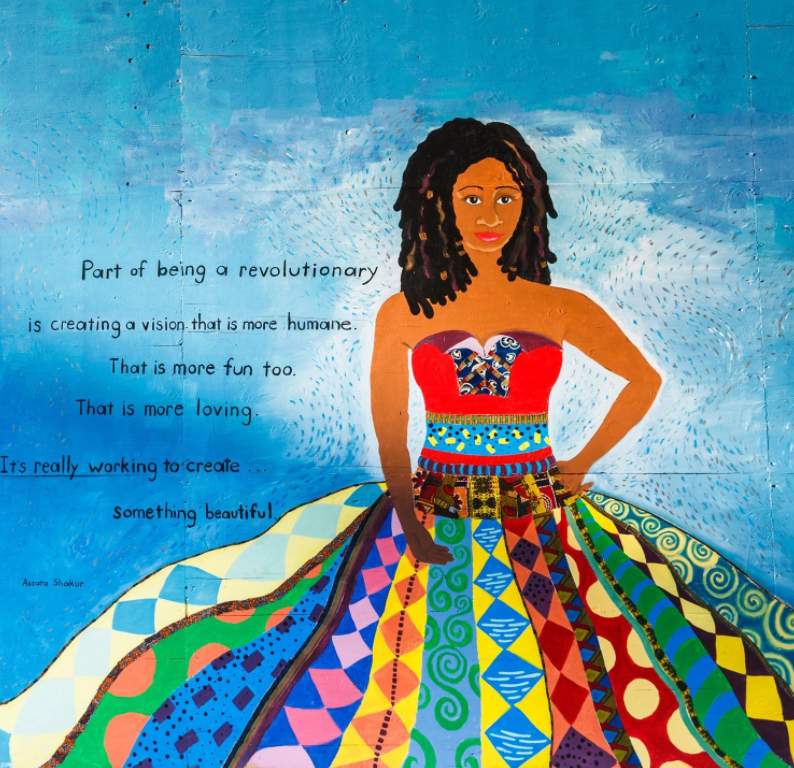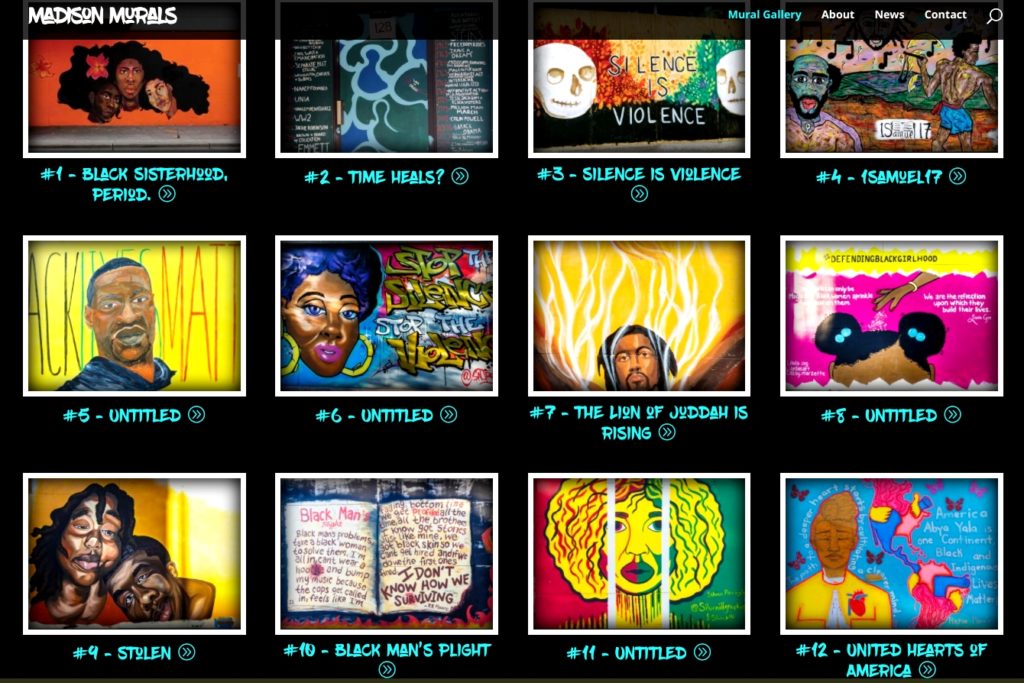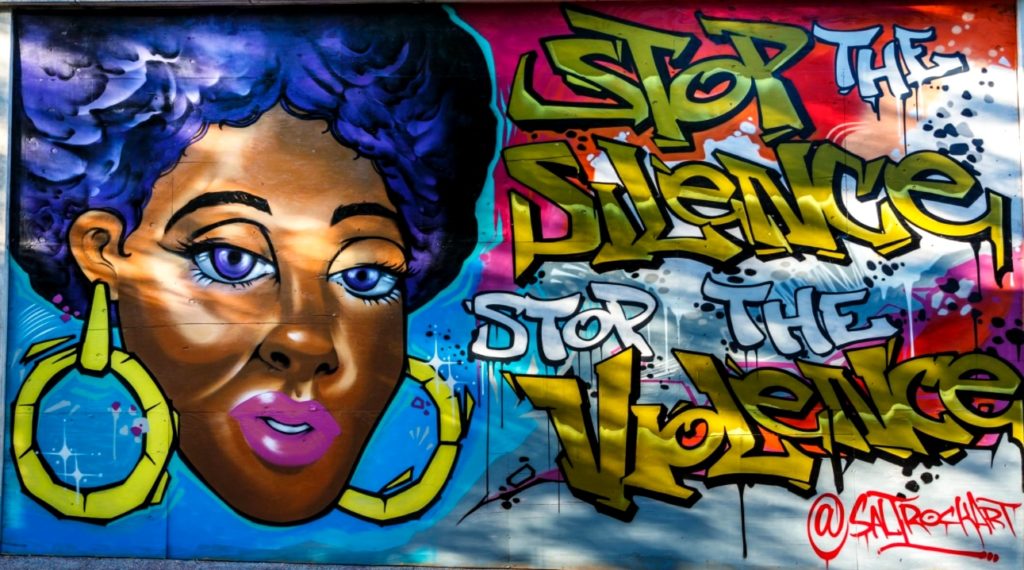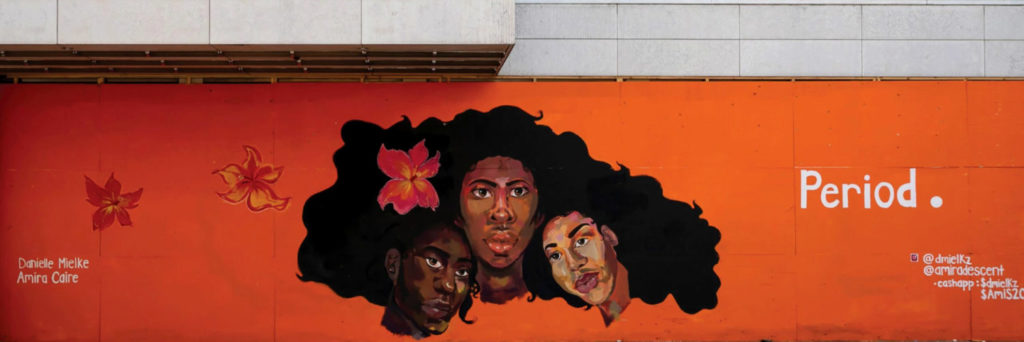
In the summer of 2020, Madison’s State Street and downtown area saw many boarded-up businesses brightened up with all types of colorful murals with beautiful images and powerful messages by local artists. The success and the impact of the Madison Murals 2020 project has been overwhelming.
Omega School Principal Oscar Mireles came up with an idea to preserve the memories of the murals and this week has launched a “Madison Murals” website with the purpose of generating important conversations with the help of artwork created in Madison during the summer of 2020.
“This is very important history. We’ve been raising money to make this happen,” Mireles, who pulled all the pieces together and launched the website on Monday, tells Madison365. “Quickly some murals went up and quickly some went down and now the last ones are going down. This website is about the preservation of history.”
The murals live on through the “Mural Gallery” that highlights 61 different murals from State Street and where — with a simple click — you can learn more detail about every mural. This gallery serves as a celebration of the vibrant community murals that have shaped the area, preserving their stories and the cultural significance they represent.

“I wanted the pictures to be the focal point and then also supply some additional information,” Mireles says. “I wanted the murals to be first so you can see them and then you can get some basic information if you want to go deeper there are lesson plans and background material.”
The murals touch on a multitude of important subjects including racism, police brutality, Black sisterhood, resistance, and much more.
“I think a lot of people on the outside think this is all kind of one voice and one lens when in reality the diversity of voices and artists and artwork was incredible,” Mireles says. “People often want bite-sized things that they can understand, but the enormity of it is a testament to the Black culture and experience.”

Artists: Amira Caire, Danielle Mielke & Alana Caire
LOCATION: University Book Store.
The Diversity Initiative Committee of the Overture Center for the Arts provided funding for UMOJA Magazine, which published a special issue commemorating the murals. Betty Custer Harris, president of the Overture Center for the Arts, raised the funds for the UMOJA printing of the murals issue, Mireles says. Photographers Hedi Rudd, Amadou Kromah, and Martin Jenich provided most of the mural photographs for the magazine and website.
“Karin Wolf from the CIty of Madison saw blank canvasses and she was really able to jumpstart this and really focus on providing a space for artists to share their voices and really make it easier for them to display their work,” Mireles says. “They provided supplies and a modest stipend. For a lot of artists, it was great exposure and an opportunity for people to see their great work.
“Secondly, individual store owners commissioned artists to do their work,” he adds. “There were other artists who came along and started painting, so there was a free association part to this … then we had graffiti artists who did work on their own and then there were people tagging. So there was a lot of free expression.”
Mireles specifically thanked MMSD teachers Charlotte Cummins and Naomi Smith, who shared their thoughts and created some of the initial lesson plans that sparked this initiative.

Created by Salt Rock on Madison Museum of Contemporary Art.
Cummins’ mural was untitled but the artists called it many things informally as they worked on it including “Royalty.”
“There were a group of six of us who worked on our mural – three of us worked on the whole thing and three who popped in over the weekend. We started on Saturday morning and by Sunday evening we were done,” Cummins tells Madison365.
“I just love textiles and fibers and that’s why we decided we would paint and use all of these African fabrics. We ended up putting pieces of the African fabric and collaging them on top,” she continues.
“The reason we decided to paint a person of royalty is that because so many times when you are a person of color, you’re not the white version of beauty. Because you’re not the dominant culture’s version of beauty, you can often feel like you’re lacking in some way,” she adds. “We just wanted to remind people that we’re descendents of royalty and we have strength, beauty, intelligence and virtues in our DNA.”
The website calls the mural (pictured below) “Part of Being a Revolutionary” and contains a famous quote from Assata Shakur:
“Part of being a revolutionary is creating a vision that is more humane. That is more fun, too. That is more loving. It’s really working to create something beautiful.”

Cummins, who was an art educator at Chavez Elementary School while painting the mural and is now the director of education at the Museum, says she feels like it is important for kids to know what is happening in their world, so she wrote a lesson plan based upon her mural that she used in her own classroom and was able to share with other educators.
“In this case, Oscar was looking for lesson plans but I wrote more lesson plans than for just this piece of artwork,” she says. “I selected other pieces of artwork from downtown Madison and developed lesson plans so that all of my students would be able to see the work and to really understand and look and see why the artist chose certain colors or patterns or what exactly the artist was trying to convey.
“We really want to dig deeper beneath the surface because some of the artwork has quite a bit of a story to tell … a historical story, as well,” Cummins continues. “Writing lesson plans for my own use was something that I was doing anyways so it was very easy to write one when Oscar approached me and asked me if I’d be interested in writing some lesson plans. It was a natural thing to do to be able to talk to kids about the protests that were happening.”
The pages of the Madison Murals website have learning guides to help generate conversations about the murals and that give helpful context, essential questions, and tips on how to better understand the murals. The learning guides give historical data, relevant links to information, and ideas to further conversations.
“Dr. Edith Beltran did the majority of the lesson plans and study guides,” Mireles says.
“I want to extend an opening for other teachers who want to submit,” Mireles adds. “We’re counting on study guides for parents or lesson plans for teachers. It’s a combination. We’re making a call for submissions and then we’ll expand the website later on.”

Created by Amira Caire & Daniele Mielke on the Overture Center for the Arts.
Mireles says he’s very happy that the artwork created in the summer of 2020 in Madison is generating important conversations.
Cummins concurs.
“I want young people to know that protests are something that happen worldwide; not just here in Madison, Wisconsin,” she says. “Historically, they’ve been all around the world and we have highlighted certain situations where people have not been treated fairly and compared and contrasted them.”



